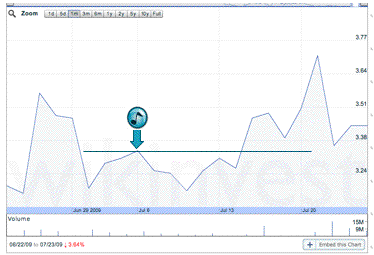 One of my TV addictions is Dragon’s Den, a show where entrepreneurs pitch to 5 of Britain’s most successful business people, who may invest their own money if the pitch is good enough.
One of my TV addictions is Dragon’s Den, a show where entrepreneurs pitch to 5 of Britain’s most successful business people, who may invest their own money if the pitch is good enough.
Last week’s episode (I’ve just watched the rerun) had a perfect pitch, from Sharon Wright, it’s one that future candidates could learn from.
1 Know your figures
In the first sentence Sharon Wright stated what she was asking for; £50,000 for 15% equity in the business.
She did not state – or at least it was not televised – sales numbers or profit margins, but I have no doubt that she knows exactly the revenue, costs, accounts owed.
2 Know your concept
The product was simple, so simple you can’t believe it hasn’t already been invented. It solves a recognisable problem, and has an obvious sizable customer market.
Sharon was able to explain the problem – she’d seen it herself when the BT engineer came to her house and used a coathanger to manouver the cable through the wall of her new built house. She thought there must be a better way, and went on to invent magnamole.
She demonstrated the product on the programme – and her simple demo worked.
3 Know your clients
The Dragons want to know that your product or service will sell, the easiest way to demonstrate this is to have some existing clients. Depending on where you are in the development cycle of your product it might be a ‘trial sample’ that is sold. In the case of Sharon Wright she has a 2 year contract with BT, and distribution agreements in the UK and the US.
4 Know the future of your company
Have a vision about where you want to take it, know how it can grow.
Companies can grow by gaining market share, growing into new geographic markets, or by developing new products. For a product to be interesting to investors it needs to have growth potential, and it needs to be scalable.
Sharon Wright’s vision includes geographic growth, one of her uses of the investment money is to translate the instruction packs. But she also had an answer when Peter Jones pointed out that this is a market that will become saturated. “Yes, my next product…” The fact that she’s thought that far ahead and will go on and develop more products in the future was a seller for investment hungry Dragons.
5 Protect your product
If a product or service is easy to copy it’s less attractive for investors, an imitator could change the market before they have a chance to recoup their investment.
Sharon Wright already holds patents, both in the US and UK.
6 Know your stuff
The Dragons are investing in a business, but they’re also investing in you. You need to show your expertise, you need to show you’re professional, and you need tell the story of how you got to the product coherently.
In this case, Sharon has done a lot of the right things in developing her business so was very credible, the development of the product was inspired by a real event and drew on her background in Health and Safety.
7 Know what you need
Know what you need to make the business grow, know what you plan to spend the money.
In this case the stated need for the money was to internationalise the product and conduct some market research, but her real need was the expertise of a Dragon, and when the moment came she got to say which Dragons she’d prefer to work with.
8 Be human
The Dragons need to like you, at least a little, to invest in you. So showing something of yourself is good.
Sharon indicated that one of the reasons she wanted a Dragon on board was to go faster in making decisions, and she expressed some regret and frustration that she hadn’t been able to go faster. That drew some laughter from the Dragons, they made it very clear that she’s done amazingly well in just two years.
The result? All the Dragons were interested, and the eventual offer (80K for 22.5%) from James Caan and Duncan Bannatyne, valued the company higher than she had coming in. It might sound odd, but it was a win on both sides.
I’m sure she’ll be successful, I hope she’s featured on next year’s follow up show.
 “This policy applies across the board”.
“This policy applies across the board”.

















